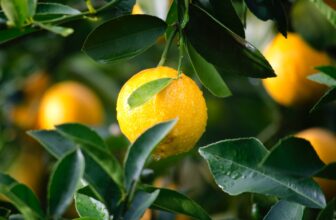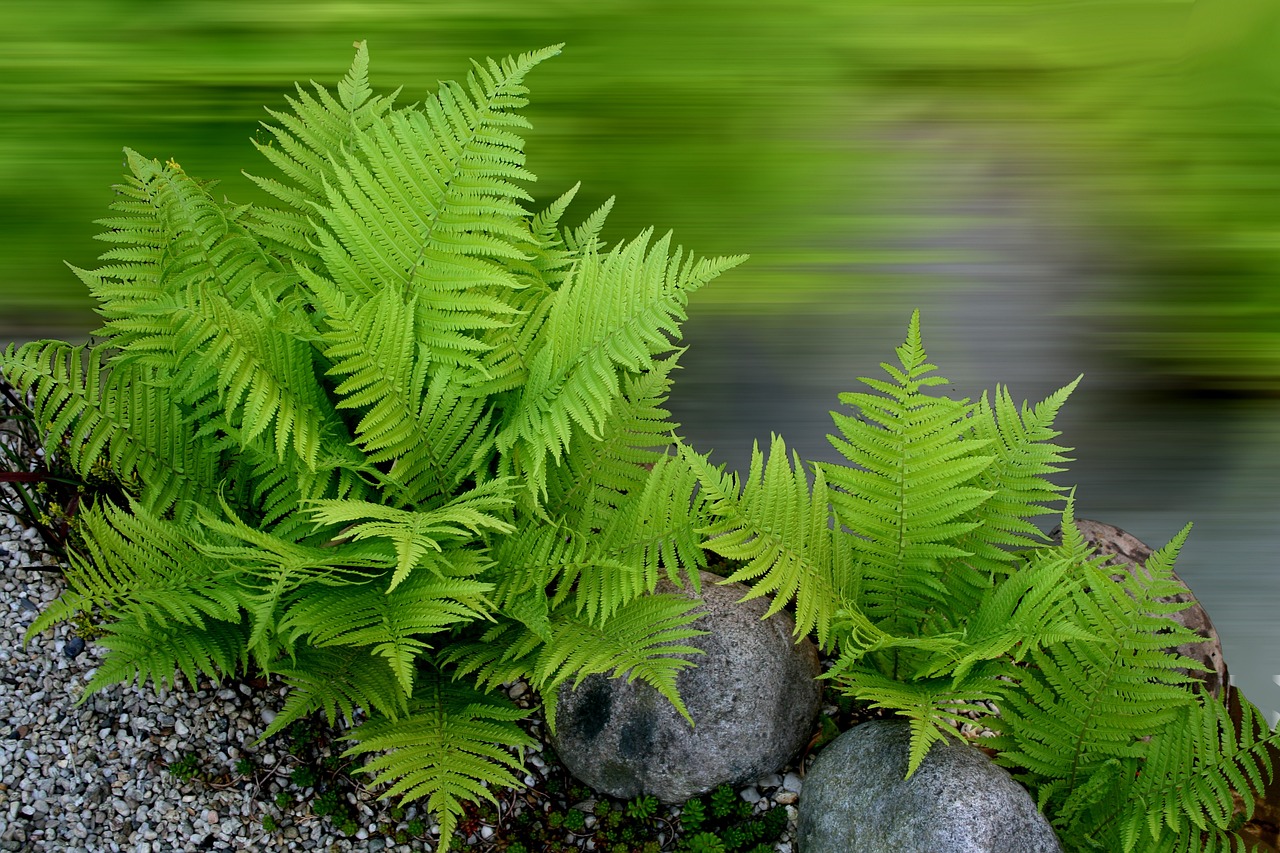
Table of Contents
Available all around the world and in a wide variety of species, ferns are increasingly becoming a popular type of houseplant. They are well-loved for their artistic and natural beauty. If you are someone that likes aesthetic greenery in your indoor spaces, why not try out some of the best types of indoor ferns listed in this article?
About Ferns

A fern (Polypodiopsida or Polypodiophyta) belongs to the group of vascular plants (plants with xylem and phloem). They are some of the oldest living plants with about 12,000 species from little miniature-sized plants to towering trees. Ferns also grow in a wide range of temperatures.
Ferns have a unique method of reproduction. They reproduce via spores and not by seeds or flowers. Unlike other plants, ferns have a distinct variation in their appearance in terms of color and structure. They also vary in size, where the leaves can be any from slender and petite to large pointy, curly, or jagged leaves. The foliage can vary in color as well displaying a large range of greenish shades.
Ferns can be used as decorative pieces in your homes or gardens. They can be grown in a hanging basket, a small planter on a windowsill, or a large flowering pot to suit your creativity. Ferns can be diversely grown anywhere in your house, both indoors and outdoors, according to your preference. This article discusses ferns that will suit indoor growing conditions.
Boston Ferns (Nephrolepis Exaltata)
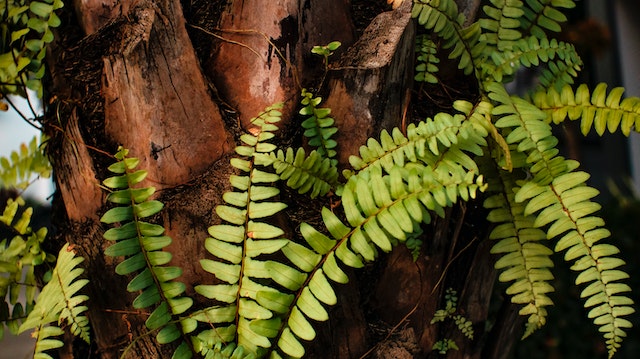
Nephrolepis Exaltata, also known as ‘Boston Fern’, is one of the most popular evergreen houseplants that are adored by many. It grows deep green, sword-shaped, erect fronds with slightly serrated edges, growing up to approximately 2 – 3 ft in height.
The characteristics of their fronds give a ruffled and natural rustic look which makes them ideal in a hanging basket or as a small potted indoor plant that you could place on a bookshelf. Although they are mostly grown indoors, planting them outdoors is also optional given the right conditions.
Boston ferns prefer a very humid environment with plenty of indirect light to thrive in. Watering of the plant is crucial as it needs to be done frequently to prevent the soil from drying out. Ideally, the plant can be watered twice a week, and misting the plant is also recommended to maintain a humid and fresh environment for the plant.
Care for Boston Ferns
- Watering: Frequently with misting included
- Light: Indirect, bright light
- Humidity: Require high levels of humidity
- Temperature: Between 65-75 F
- Soil pH: Acidic
- Hardiness: USDA Zones 9 – 11
Hart’s Tongue Fern (Asplenium Scolopendrium)
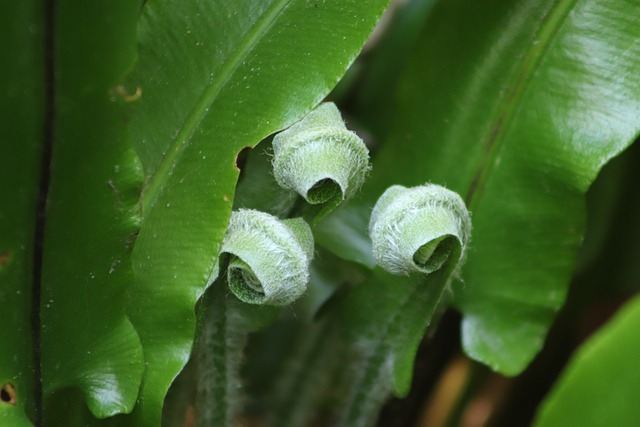
Hart’s tongue, scientifically known as ‘Asplenium Scolopendrium’, grows in a beautiful bright green rosette with orangish brown spores underneath the leaves, which makes this plant quite exotic.
The glossy leaves usually have an arching appearance and are also shaped like a tongue, thus giving their name. These plants tend to grow up to 60cm in height. One distinct feature which makes Hart’s tongue unique from other ferns is that its fronds are undivided.
Despite it being a hardy fern, it can also be a great garden fern if the right care is given. Hart’s tongue loves humidity. Remember to water the plant once or twice a week when the soil is quite dry. Usually, it is recommended to feel the texture and the dryness of the soil before watering. If the soil feels slightly dry, this gives you the signal that the plant needs water. Do not overwater your plants as the roots may rot.
Light is a crucial requirement for Hart’s tongue. Although it prefers bright, indirect light, it should not be placed under direct light or prolonged exposure to direct light. If planted outdoors, it is essential to select a place in a shady area to prevent the leaves from burning and discoloring.
Care for Hart’s Tongue Fern
- Water: Water the plant once or twice a week once the soil seems slightly dry
- Light: Bright, Indirect light
- Humidity: High humidity required
- Temperature: 50-65 F
- Soil pH: Alkaline soil
- Hardiness: USDA Zones 4-9
Staghorn Fern (Platycerium)
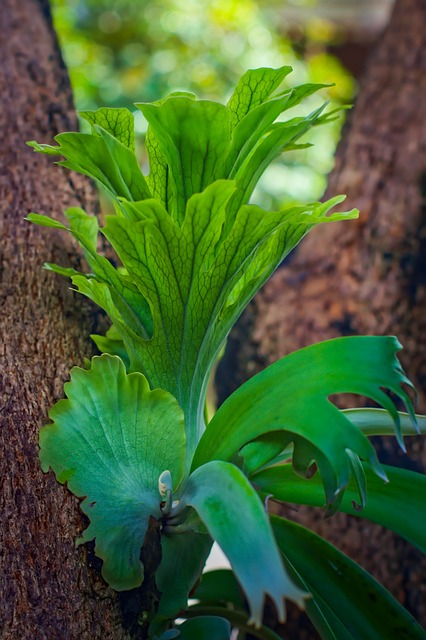
Platycerium, commonly known as Staghorn, has an appearance that resembles a deer antler. This species has 2 types of leaves: Basal or shield fronds and fertile fronds. Basal or shield fronds are small kidney-shaped leaves that grow covering the root ball to protect the roots from damage and it also plays a role in the absorption of water and nutrients. Fertile fronds are stag-antler-shaped long leaves that bear spores underneath their surface that aids in the reproduction of the plant.
The plant usually grows to a height of 3 feet. Staghorn ferns are epiphytic plants which means that they can grow on other surfaces such as tree trunks, walls, or rocks. Even though Staghorn ferns require some attention, their unique and artistic look makes them common among gardeners who grow them both indoors and outdoors.
Frequent watering is essential, usually once a week during summer months and once or twice every 2- or 3-weeks during winter. Make sure to allow the base of the plant to dry before the next watering. These ferns will thrive in low to medium light along with good moisture to really help the plant maintain its green and natural beauty.
Care for Staghorn Ferns
- Water: Frequent watering with dry soil in between
- Light: Bright, indirect light
- Humidity: High humidity required
- Temperature: between 50-100 F
- Soil pH: n/a
- Hardiness: USDA Zones 9-12
Delta Maidenhair (Adiantum Raddianum)
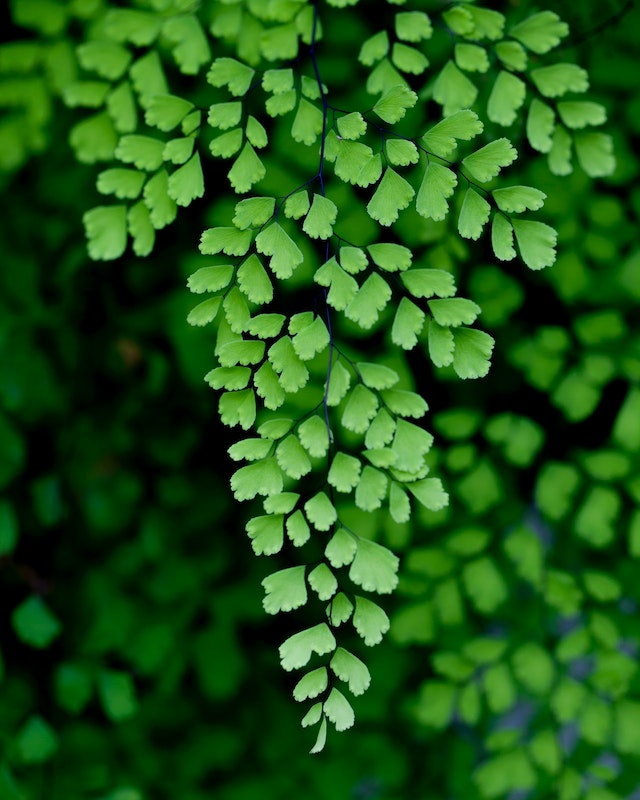
A fast-growing, delicate fern, Delta Maidenhair, is a popular indoor fern that produces smooth and small triangular-shaped fronds with several pinnate leaves with deep foliage. This contrasts beautifully with its thin, purplish-black stalks to bring out an aesthetic look, especially when placed on a shady windowsill indoors.
This elegant fern grows to a height of approximately 50cm and the foliage may deepen upon maturity. These ferns can be grown both indoors and outdoors, however, optimal conditions are mostly provided in a controlled indoor environment, where this plant can thrive.
It is a humidity-loving plant that grows best in moist and well-drained soil with bright but indirect light given to them. If grown outdoors, make sure to select a shady place to ensure good indirect light exposure.
Care for Delta Maidenhair Ferns
- Water: Moderate watering to maintain moisture
- Light: Bright, Indirect Light
- Humidity: High Humidity required
- Temperature: 65-75 F
- Soil pH: Alkaline
- Hardiness: USDA Zone 10-11
Eagle Fern (Pteridium Aquilinum)
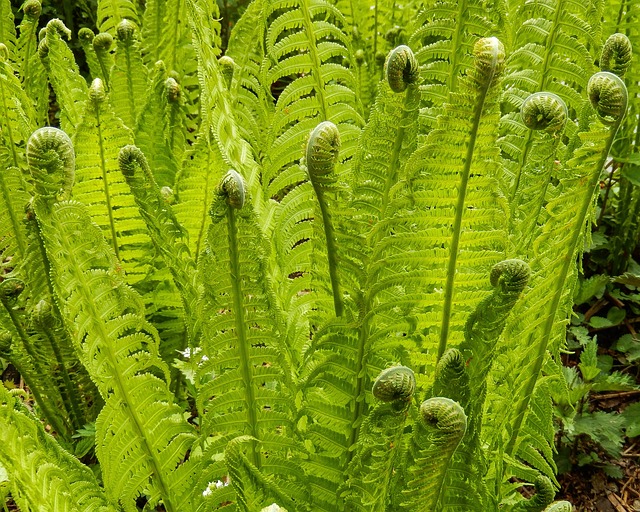
This herbaceous perennial grows dull green, triangular, and erect fronds which are divided into several segments and are raised from underground rhizomes. The fronds can grow to up to about 4 ft and have curled tips which gives the plant an extra attractive look.
Clusters of spores are present underneath the curled, fertile fronds which, as in other ferns, helps in reproduction. They prefer a shady and humid atmosphere.
A combination of well-drained, moist soil and shady light is the ideal condition required by your Eagle fern to thrive. Apart from its rustic and appealing appearance, you can proudly say that your houseplant is also used in international cuisines in countries such as Korea, Japan, and some regions of China.
Care for Eagle Fern
- Water: water regularly, once, or twice a week
- Light: Indirect, shady
- Humidity: High humidity required
- Temperature: 59-86 F
- Soil pH: Acidic to neutral
- Hardiness: USDA Zone 3-11
Kangaroo Fern (Microsorum Diversifolium)
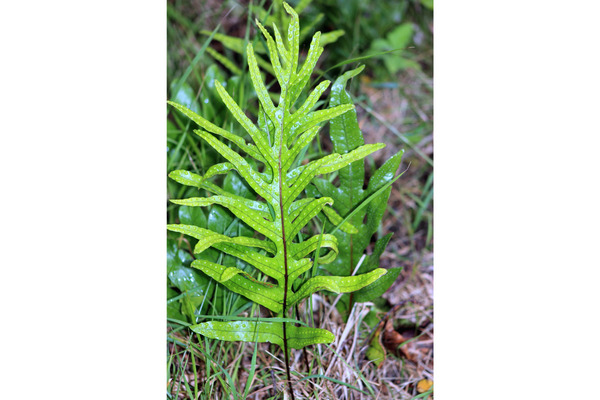
Microsorum Diversifolium, also known as kangaroo fern, has dull, deep green, glossy leaves which makes the plant stand out from the others. If you are looking to add a green, tropical vibe to your house or garden, this type of fern can be one of the best choices. Small spore-producing structures are present underneath the leaves which aids in plant reproduction upon reaching maturity.
Kangaroo ferns may reach approximately 3 feet and do well both indoors and outdoors. Although they are low in maintenance, some love and care are essential to help the plant thrive in its habitat. Remember to water the plant regularly and misting is also recommended to maintain a humid and moist environment for the plant.
Despite all the time and effort, you put into caring for this plant, the Kangaroo fern adds an elegant and sculptural presence to your house or workspace.
Care for Kangaroo Ferns
- Water: Frequent watering with misting
- Light: Moderate, indirect light
- Humidity: High humidity required
- Temperature:65-75 F
- Soil pH: Slightly acidic with neural
- Hardiness: USDA Zones 9-11
Asparagus Fern (Asparagus Setaceus)
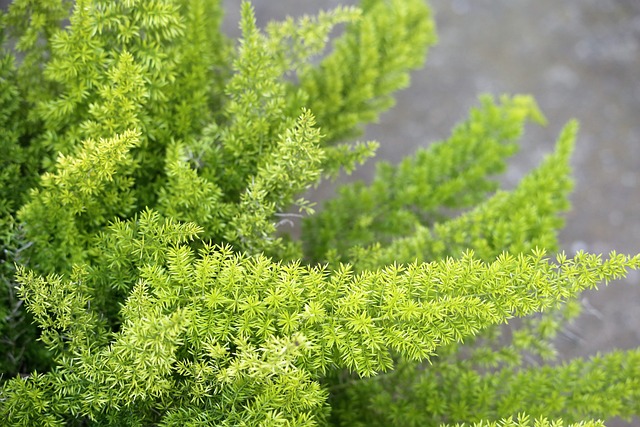
Asparagus fern, the most common type in the Asparagus species, is a perennial herb that grows bright green, needle-like, feathery leaves that can grow up to 3ft in height. Their ornamental appearance makes them great decorative elements for your indoor spaces.
The ideal planting period for asparagus is during the spring, and a beautiful and healthy plant can be grown under these conditions. However, provided the warm and humid environment it prefers, this fast-growing plant may tend to overgrow invasively if grown outdoors.
Optimum conditions can be provided in an indoor area, such as your living space or your workspace, where all the essential factors needed for healthy growth can be supplied in a controlled manner. With a little bit of love and care, these houseplants can solely be one of the most naturally artistic decorative items that you can have in your house with the least expenses.
Care for Asparagus Ferns
- Water: Regular watering with daily misting is required
- Light: Indirect, shady light
- Humidity: very high humidity required
- Temperature: 55-70 F
- Soil pH: Slightly acidic
- Hardiness: USDA Zones 9-11
Crocodile Fern (Microsorum Musifolium)
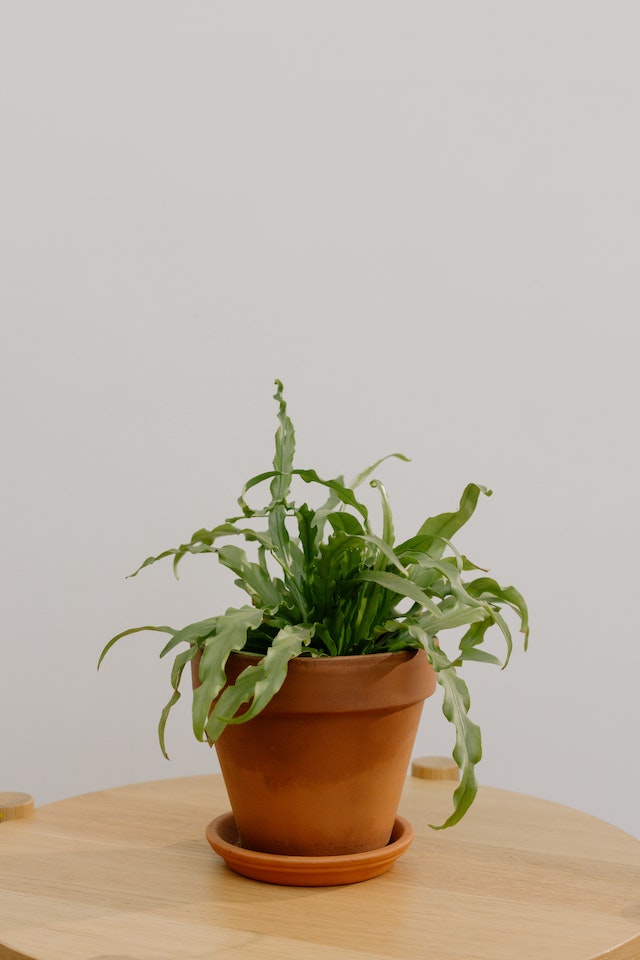
Microsorum musifolium, commonly known as ‘Crocodile fern’, has an unusual, unique appearance. Its leaves are wrinkly, and glossy, and have a textured surface almost like crocodile skin, thus giving its name. The bright green, puckered leaves give a rustic showcase look to your tables or countertops.
Crocodile ferns being slow growers, they can still grow up to a height of 5 feet under the right conditions. Tropical and humid environments are preferred by the crocodile fern so make sure to give plenty of water and give good exposure to bright, indirect sunlight to deliver the ideal living conditions. With this simple care, the Crocodile fern will thrive into an exotic plant to maintain its natural aesthetic beauty and flourish to its best capacity.
Care for Crocodile Ferns
- Water: Regular watering is required. Prevent soil from drying out.
- Light: Bright, indirect/ shady light
- Humidity: High humidity required
- Temperature: 65-75 F
- Soil pH: Slightly acidic to neutral
- Hardiness: USDA Zones 10-11
Holly Fern (Cyrtomium Falcatum)
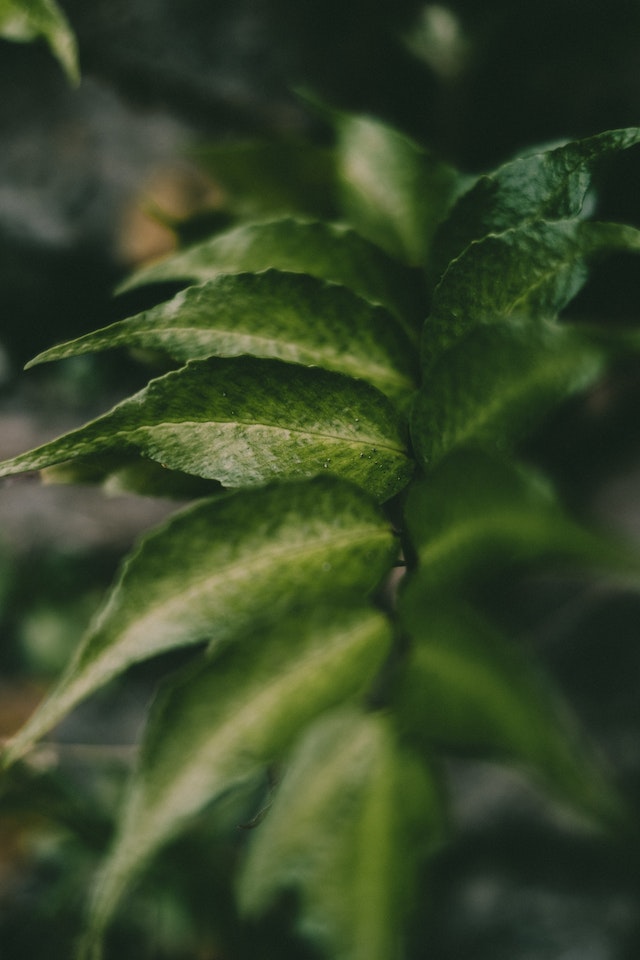
Named after its jagged, sharp-tipped leaves, the Holly fern grows dull green, leathery leaflets, giving the plant a matte look on the surfaces of the leaves. Once matured, the plant can grow up to 2 feet in height with a spread of 3 feet. They happily grow in shady areas as a border plant and can also be grown in containers outdoors or as a potted plant for a patio or a shady terrace.
As low maintenance as it is, some essential factors are there to aid in optimum growth. The plant can be watered once or twice a week with soil drying out in between watering. Light is crucial as they prefer to grow in a fully shady or even partially shaded area. Planting them on a flowering bed is also ideal to further reveal their natural beauty as the deep foliage contrasts perfectly with the colorful flowers on the bed.
Care for Holly Ferns
- Water: Frequently and regular misting is recommended
- Light: Shady, indirect light
- Humidity: High humidity required
- Temperature: 65-80 F
- Soil pH: Acidic to neutral
- Hardiness: USDA Zones 6-11
Lady Fern (Athyrium ‘Ghost’)
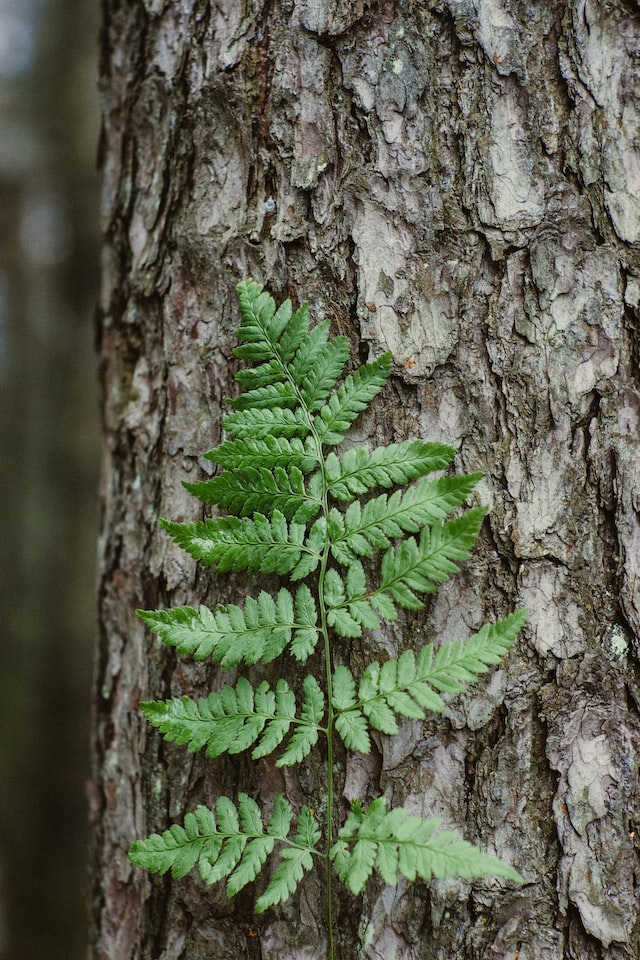
Athyrium ‘Ghost’ is an attractive species of fern distinguished by its upright silver foliage. These small, silver-greenish, triangular-shaped fronds ascend from a dark purple stalk which provides a great contrast to the colors.
Growing to approximately 3 feet in height, these plants thrive in shady and moist conditions to maintain their color and natural frosted appearance. The ornamental feature of Lady ferns makes them an exceptional house plant and can be easily used as decorative pieces.
Care for Lady Ferns
- Watering: Regular watering to ensure moist soil
- Light: partial to full shade light
- Humidity: High humidity required
- Temperature: 65-75 F
- Soil pH: Acid to neutral
- Hardiness: USDA Zones 4-9
Wrapping Up
These fascinating, versatile species of ferns open a whole new scope to gardeners. A wide variety of these ferns are available for both indoor and outdoor growing purposes. The 10 types of ferns listed here are some of the best ferns you could grow indoors to add an exotic touch to your indoor spaces.






